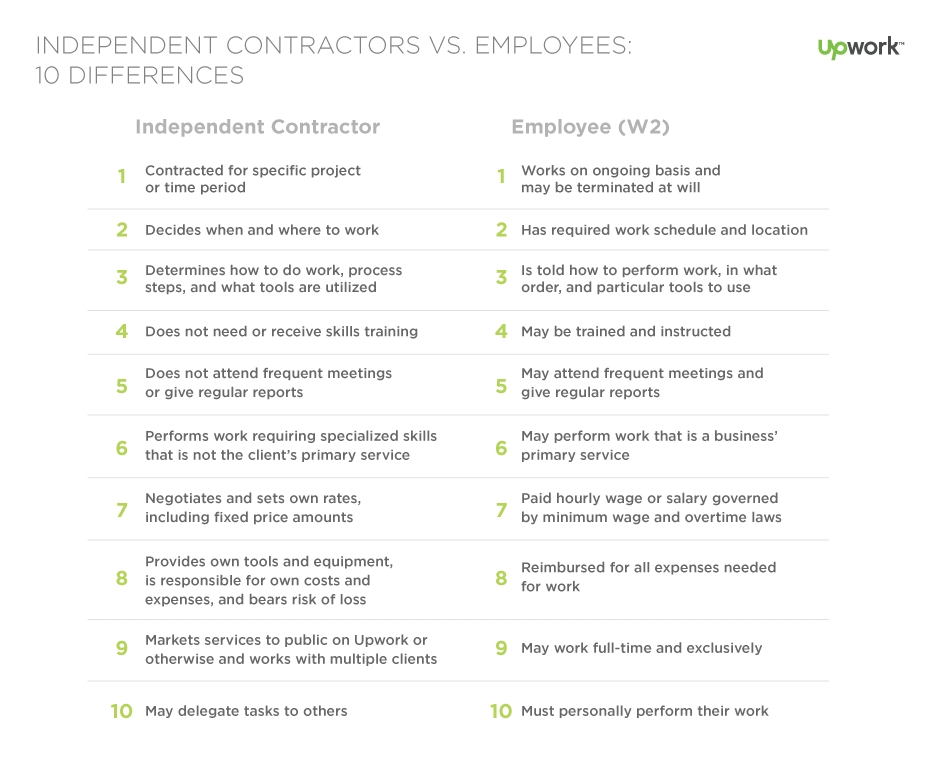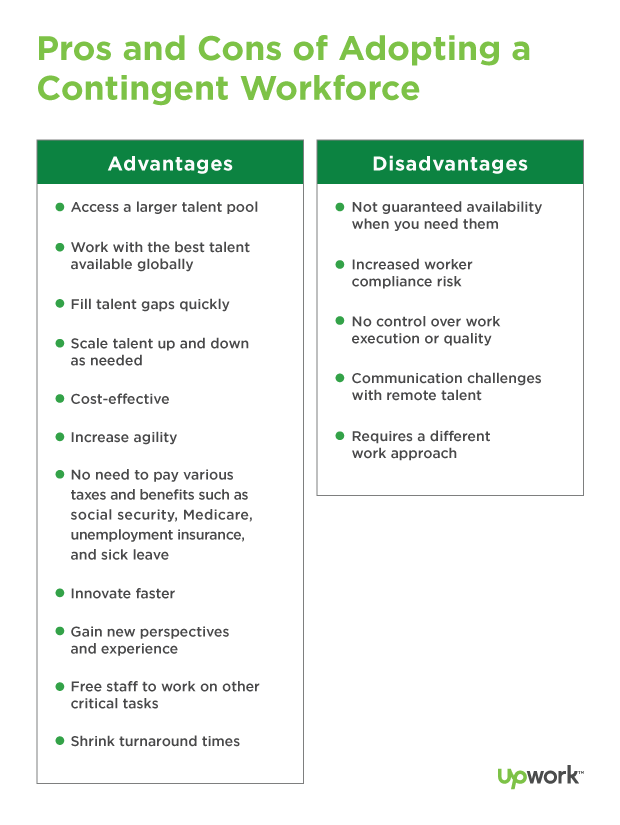
Across all industries, more companies are using contingent workers as part of their talent and business growth strategies. With so many companies adopting this workforce, should your company do it too? Here’s how to decide.
What are contingent workers?
Contingent workers encompass a variety of people who only work on a project or temporary basis. This label applies to all workers of any skill type or experience level. This workforce includes temporary employees provided by an outside staffing agency to freelancers and independent contractors.
You can think of them like a superhero who only comes in when you need help. They’re not part of your staff. And you aren’t responsible for providing them continuous work.
What’s the difference between a contingent worker and an employee?
Contingent workers are independent contractors who work as their own businesses. You must work with them differently than you would an employee.
Here’s an easy way to think of how to interact with them: When you visit the dentist, would you sit in the dental chair then tell them how to do their work? Of course not.
The same goes for contingent workers: You can’t control when, where, or how they complete their tasks. You just explain what you need (like building a mobile app with certain features), then step back and wait for the results. This means there’s no training and no oversight.
For U.S. workers, the quick-glance chart below shows the general differences between an independent contractor and an employee.
Contingent workforce pros and cons
Contingent workers are skilled professionals with years of experience across multiple organizations. Not only does their varied experience help them ramp up quickly, it often provides insights and fresh perspectives that can improve project results.
The chart below lists several advantages to incorporating more contingent workers into your talent strategy. Most companies recognize it’s a cost-effective way to fill skills gaps, foster innovation, and remain competitive as work needs change.
But there are also disadvantages, such as increasing misclassification risk. That is classifying workers as independent contractors when they should be employees. Getting it wrong can lead to serious tax and employment law violations.
For more about the do’s and don’ts of worker classification, see Employee or IC? Compliance at a Glance.
Incorporating contingent workers for business growth
Incorporating contingent workers into your talent strategy can range from isolated projects to creating virtual or hybrid teams.
Hybrid teams are made up of employees and freelancers who collaborate on projects of any size. Employees perform the ongoing work that moves your company forward. Freelancers perform project-based work requiring specialized skills.
Companies create hybrid teams to enhance customer loyalty, stay competitive, and boost revenue. For example, a fast-growing tech startup was close to reaching capacity at its new call center. With neither the time nor the budget to open another center, they brought on 139 remote customer service agents to support their existing live chat team based in the Philippines. Customers enjoyed the live chat option, allowing the company to further test this service. The outcome: call center volume dropped by more than half, giving them more time to plan for another center. Plus, their virtual team kept the company’s high service standards while costing five times less per customer interaction.
Is it time to add contingent workers? The reality is, you may not have a choice. Sourcing talent is harder than ever before because fewer people are looking for jobs.
- The ratio of unemployed Americans to open jobs is a low 1.4 to 1.
- More professionals are bypassing traditional jobs for the life of a freelancer.
- The U.S. has 55 million contingent workers. That totals 35 percent of the U.S. workforce—and it’s growing.
That’s why more companies are embracing the contingent workforce. And they’re making the transition to contingent workers easier by using specialized freelancer platforms.
Consider solutions like Upwork Enterprise, which combine a technology platform with personalized services to help you build a reliable talent pool and engage them safely. All while maintaining visibility to track total spend.
See how easy it is to get more done with contingent workers. Visit Upwork Enterprise today!

